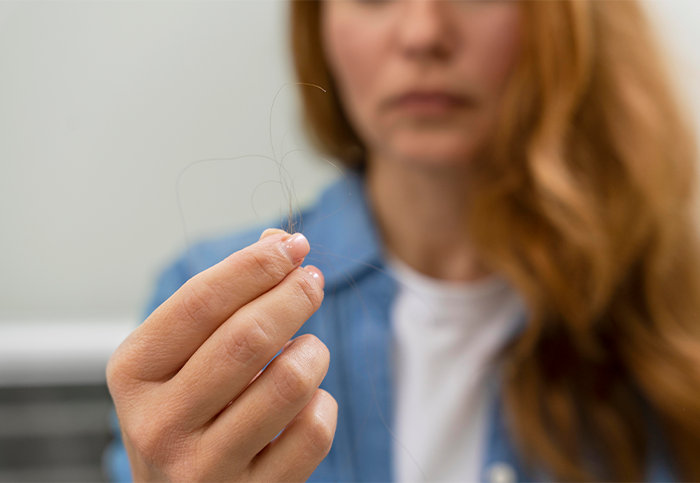Vitamin D Deficiency Leads to Osteoporosis
Osteoporosis is a bone disease that occurs when bone mineral density and bone mass decrease. Bone tissues that break down, are constantly remolded and rebuilt on regular basis in our body. Bone remodeling is a natural process of replacing old bone tissue with the new one. Osteoporosis begins when this equation gets disturbed, and the rate of mineral loss exceeds over mineral deposition in bones. Eventually, bones become brittle and can easily experience fractures.
Who is at high risk of vitamin D deficiency?

• Elderly people
• Those who have a little sun exposure
• People suffering from kidney diseases, because kidneys convert vitamin D into its active form
• Darker skin people, because they have high melanin levels in their bodies which protect them from sunlight
• Lactose intolerant, because they can’t consume dairy products which are considered good sources of vitamin D
• Vegetarians, because vitamin D is not present in vegetables in a decent amount to fulfill the requirements
• Menopausal women, because estrogen level decreases in menopause which is involved in the activation of the vitamin D
Not getting recommended levels of calcium and vitamin D from the diet, high intake of sodium, and caffeine, being inactive, smoking, and obesity are the risk factors that put the elderly people at the risk of osteoporosis.
What are the symptoms of Osteoporosis?
• No symptoms in the early stages
• Back pain due to a fractured or collapsed vertebra
• A stooped posture
• Spontaneous bone fractures
• Loss of height over time
Role of vitamin D in Osteoporosis:
Vitamin D helps the intestines absorb calcium from the food we eat. It also helps calcium reach its full bone-building potential. Calcium and vitamin D together are involved in the development of strong bones in young people and the strengthening of bones in older adults. It slows the progression of osteoporosis.
Tips to manage Osteoporosis:
A healthy diet, physical activity, supplements of vitamin D and calcium, 15 to 20 minutes of daily sun exposure in summer, and 20-30 minutes in the winter are the important tips to reduce the risk of osteoporosis.
1. Role of diet to manage Osteoporosis

Diet plays a decent role to prevent and manage osteoporosis. If we consume vitamin D and calcium-rich foods at teenage and adolescent age, we can enjoy its long-lasting effects at an older age. Because at an early age, we have more chances of making strong bones. Here are some dietary tips to manage osteoporosis:
• Consume calcium products like oatmeal and soybeans
• Increase consumption of dairy products like yogurt, milk, and cheese
• Consume bone broth 2-3 times per week
• Eat more nuts because almonds, walnuts, and pistachios are all rich sources of calcium
2. Role of physical activity in Osteoporosis

Exercise is important for building strong bones in our teen years, and it is essential for maintaining bone strength as we grow older. So, do participate in some sort of physical activity at every stage of life because it causes no harm and only benefits. Brisk walking, jogging, and climbing stairs are some easy exercises that are helpful to manage osteoporosis symptoms.
These types of exercises work directly on the bones in our legs, hips and lower spine to slow the mineral loss. When we exercise regularly, our bones adapt by building more bone tissues and becoming denser. This improvement in bone requires good nutrition, including adequate calcium and vitamin D.
Another benefit of exercise is that it improves balance and coordination. This becomes especially important as we get older because it helps to prevent falls and fractures.
3. Role of Vitamin D supplements in Osteoporosis?

During osteoporosis, we are unable to fulfill our calcium requirement through diet only. We need to manage this nutritional deficiency by consuming good quality dietary supplements. Nutrifcator is manufacturing premium quality supplements to fulfill the calcium and vitamin D deficiencies.
I. Bonex-D
Nutrifactor’s Bonex-D provides Calcium and Vitamin D3 in one convenient formula which supports stronger bones. It helps to enhance calcium absorption in the bones. Also, helps reduce the risk of Osteoporosis.
Take 1-2 tablets daily as a dietary supplement, preferably after the meal or as directed by a healthcare professional.
II. Suncell 5000
Suncell 5000 contains 5000 IU Vitamin D3 which is specially designed for people with higher Vitamin D deficiency to promote strong bones, and muscles.
It helps to regulate Calcium and Phosphorus levels in the body and may reduce the risk of softening of bones.
Take one (1) softgel daily as a dietary supplement, preferably with a meal or as directed by a healthcare professional.
References:
• https://www.mayoclinic.org/diseases-conditions/osteoporosis/symptoms-causes/syc-20351968
• https://orthoinfo.aaos.org/en/staying-healthy/exercise-and-bone-health/
• https://pubmed.ncbi.nlm.nih.gov/1299225/
• https://pubmed.ncbi.nlm.nih.gov/23001895/



